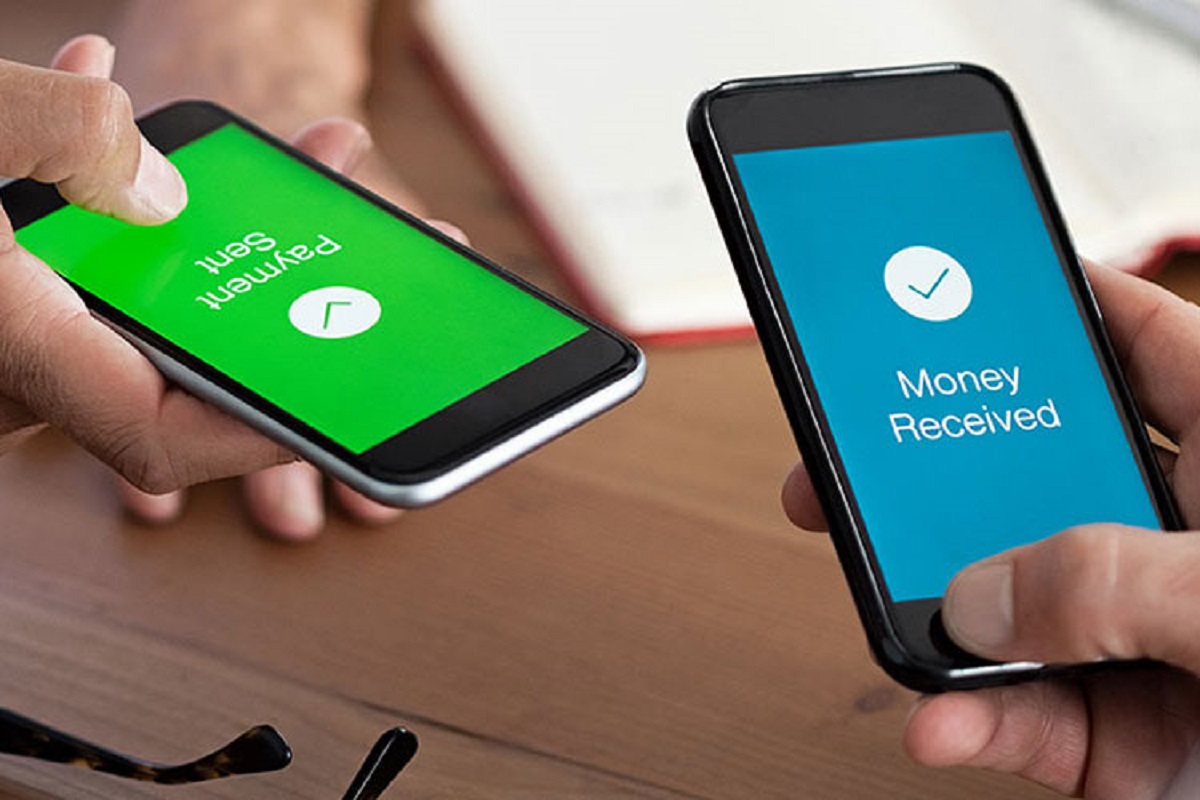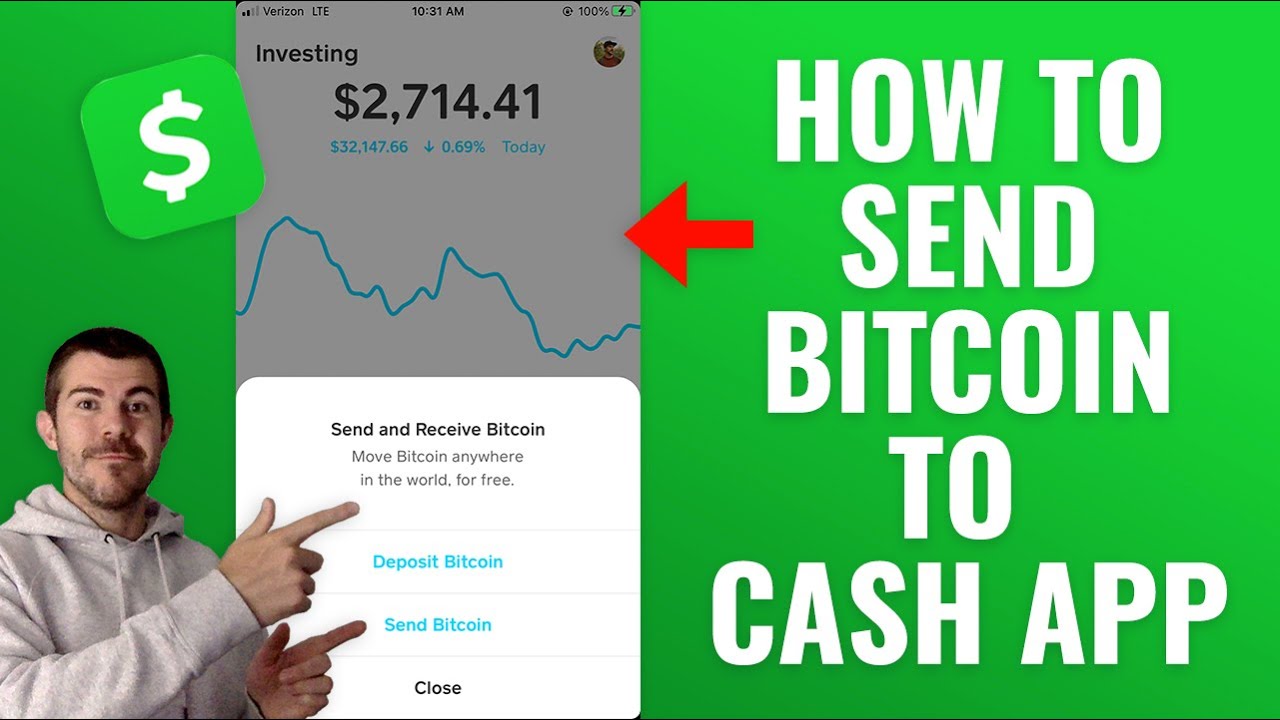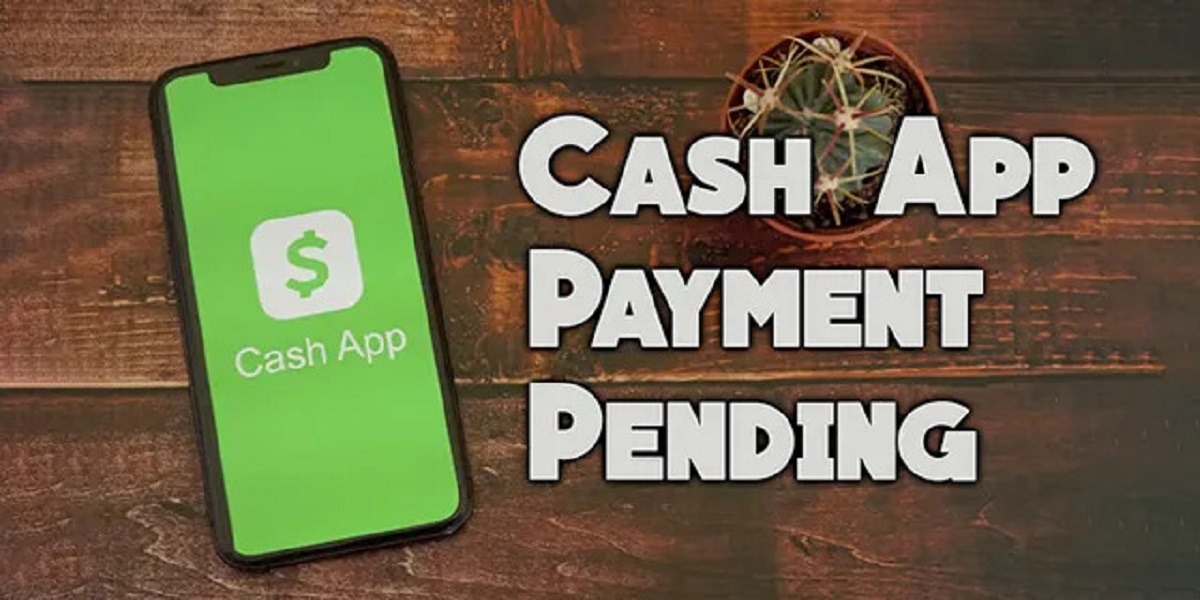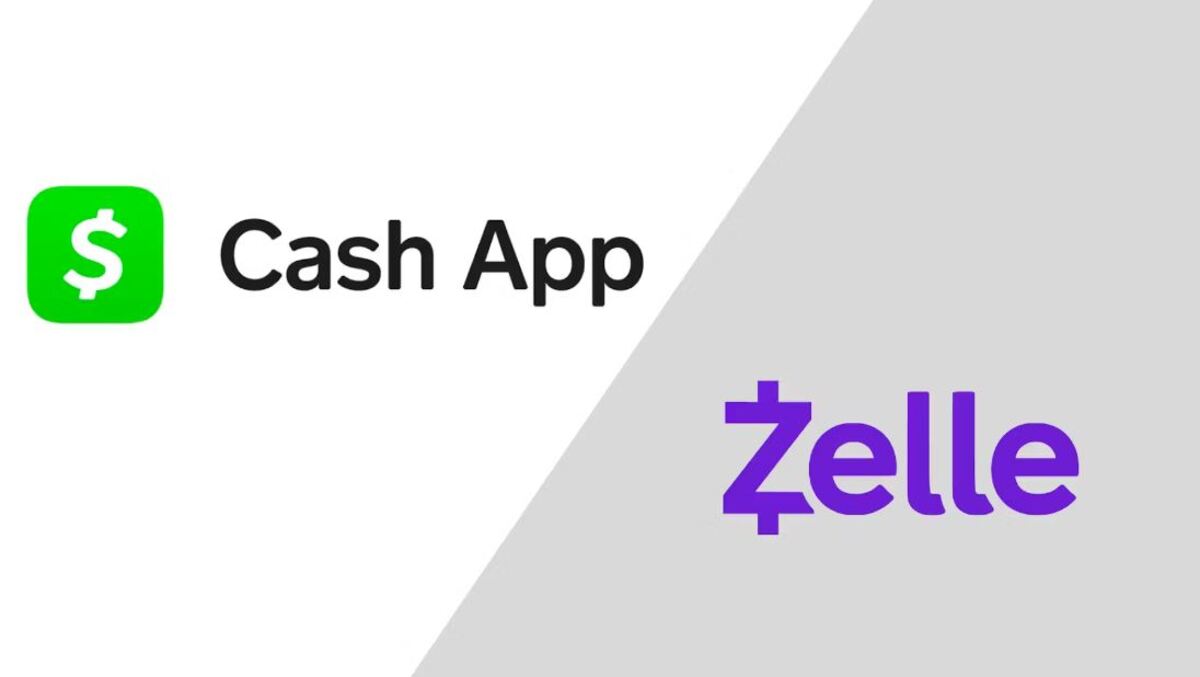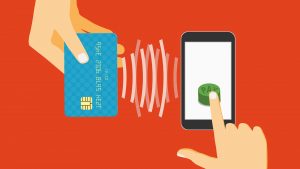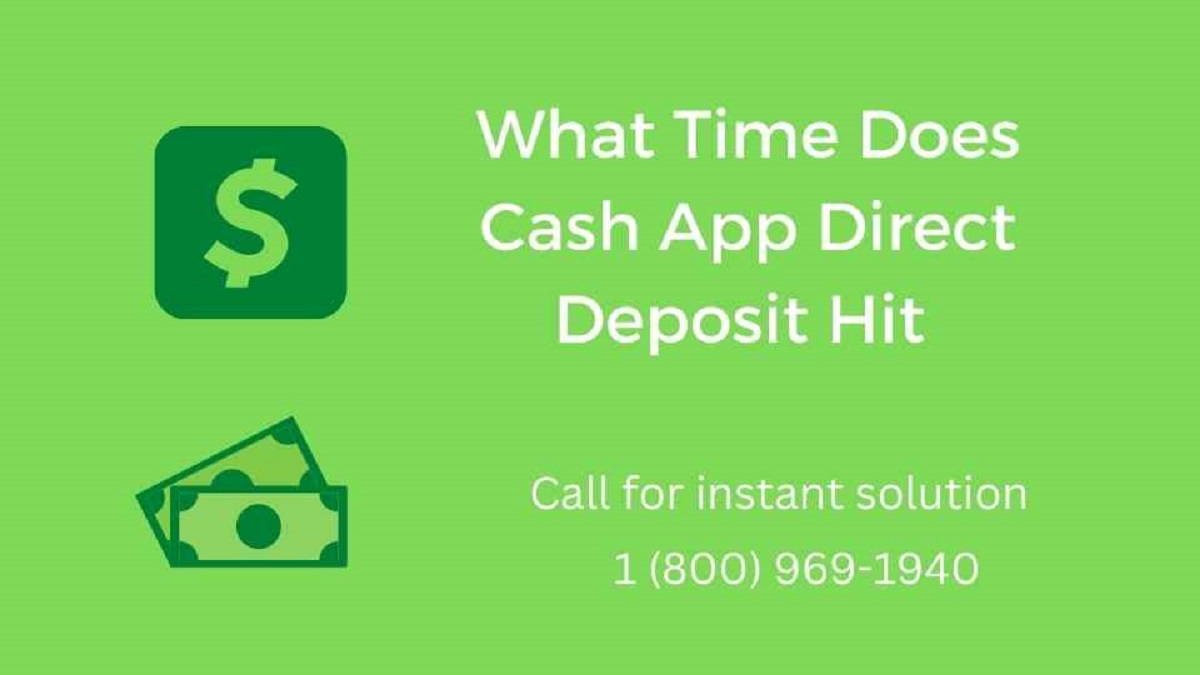Introduction
Are you a user of Cash App, the popular peer-to-peer payment platform? If so, you might be wondering how long it takes for a transfer to go through. Whether you’re sending money to a friend, paying for goods or services, or receiving funds, having an idea of the transfer time can be crucial for your financial planning.
Cash App, developed by Square Inc., allows users to send and receive money instantly using their smartphones. It has gained significant popularity due to its user-friendly interface and the convenience it offers. However, the actual transfer time can vary depending on several factors.
In this article, we’ll explore how Cash App works and the factors that affect the transfer time. We will also delve into the difference between instant transfers and standard transfers and discuss the limits on transfer amounts. Furthermore, we’ll provide troubleshooting tips for delayed transfers and offer suggestions on how to expedite the process for faster transfer times.
So, if you’re curious about the duration it takes for a Cash App transfer to be completed, buckle up and read on to learn more about this popular payment platform and its transfer times.
How does Cash App work?
Cash App simplifies the process of sending and receiving money through a user-friendly interface and a range of convenient features. Here’s how it works:
1. Sign up: To get started with Cash App, you need to download the app on your smartphone and create an account. You’ll be prompted to provide your email address or phone number, create a unique username, and link a debit card or bank account to your profile.
2. Add or receive funds: Once your account is set up, you can add funds by linking your bank account or debit card. Alternatively, you can receive funds from other Cash App users by providing them with your unique $Cashtag or using your email or phone number.
3. Send and request money: With Cash App, you can easily send money to anyone in your contacts or by entering their $Cashtag. You can also request money from others by creating a payment request within the app.
4. Cash App card and direct deposit: Cash App offers a physical debit card that you can use to make purchases or withdraw cash from ATMs. Additionally, if you receive regular payments, such as a paycheck, you can set up direct deposit to have the funds deposited directly into your Cash App account.
5. Cash App balance and Bitcoin: Cash App provides a built-in balance feature where you can store funds within the app for future transactions. Additionally, you have the option to buy, sell, and store Bitcoin directly within your Cash App account.
6. Security and privacy: Cash App implements security measures, such as PIN verification and biometric authentication, to protect user accounts. They also offer the ability to enable two-factor authentication for added security.
Overall, Cash App offers a seamless and convenient way to send and receive money, making it a popular choice for users looking for hassle-free peer-to-peer transactions.
The factors that affect transfer time
The transfer time on Cash App can vary depending on several factors. Understanding these factors will help you manage your expectations and plan your transactions accordingly. Here are the key factors that can influence the transfer time:
1. Network congestion: The speed of your Cash App transfer can be affected by the current network congestion. During peak usage times or if there are technical issues, the transfer may take longer to process.
2. Verification process: Cash App implements a verification process for certain transactions, especially for new users or large transfers. This process may involve additional security checks, which can lengthen the transfer time.
3. Bank processing time: If you are linking your bank account to Cash App for transfers, the processing time of your bank can impact the transfer speed. It’s important to keep in mind that bank processing times can vary, including weekends and holidays when transfers may be delayed.
4. Cash App payment method: The payment method you choose within the Cash App can affect the transfer time. Standard transfers, which are free, may take longer to process compared to instant transfers, which come with a fee but offer quicker completion.
5. Recipient’s Cash App status: The transfer time may also depend on whether the recipient has a verified Cash App account. Verified accounts tend to have faster transfer times since the recipient’s identity and information have already been verified.
6. Incorrect or incomplete information: Providing incorrect or incomplete information, such as mistyped usernames or entering the wrong payment amount, can lead to delays in the transfer process. It’s always important to double-check the details before confirming the transfer.
It’s worth noting that Cash App strives to provide fast and efficient transfers, but the actual transfer time can still be influenced by external factors beyond their control. If you experience any significant delays, it may be wise to contact Cash App’s support for further assistance.
By considering these factors, you can have a better understanding of the variables that can impact the transfer time on Cash App and effectively manage your expectations.
Instant transfers vs. standard transfers
Cash App offers two types of transfers: instant transfers and standard transfers. Understanding the difference between these two options can help you choose the most suitable transfer method based on your needs. Here’s a breakdown of the features and considerations for each:
1. Instant transfers:
- Instant transfers provide the fastest way to send money on Cash App.
- They are typically completed within seconds, allowing the recipient to access the funds immediately.
- Instant transfers come with a fee, usually a percentage of the transfer amount.
- Using instant transfers can be beneficial in situations where time is of the essence, such as emergencies or time-sensitive payments.
- It’s important to note that not all Cash App users will have the option for instant transfers. This feature may be restricted based on factors like account history and activity.
2. Standard transfers:
- Standard transfers are free of charge and typically take 1-3 business days to complete.
- They are a suitable option for non-urgent transfers and when the recipient can wait a few days to access the funds.
- Standard transfers can be a cost-effective choice, especially for larger transfer amounts, as you can avoid the fees associated with instant transfers.
- It’s important to consider the processing times of both Cash App and the recipient’s bank when selecting standard transfers. Weekends and holidays may cause delays in the processing time.
When deciding between instant transfers and standard transfers, consider your specific requirements and urgency. If having immediate access to funds is crucial, instant transfers provide the fastest option with a fee. On the other hand, if time is not a significant factor, standard transfers offer a cost-effective and reliable choice.
It’s also beneficial to review your account’s eligibility for instant transfers, as this feature may be limited based on certain factors. Regular usage and a history of successful transactions can increase your chances of accessing instant transfers.
By understanding the differences between instant transfers and standard transfers, you can select the most appropriate option based on your individual needs, balancing speed with cost considerations.
Limits on transfer amounts
When using Cash App, it’s important to be aware of the limits on transfer amounts. These limits are in place to ensure the security and integrity of the platform. Here’s a breakdown of the different limits you should keep in mind:
1. Sending limits:
- Cash App has a default sending limit of $2,500 per week for most users. This means you can send up to $2,500 in total over a seven-day period.
- However, you can increase your sending limit by verifying your identity. Verified Cash App users can increase their sending limit to $7,500 per week.
- It’s important to note that the sending limit also applies to instant transfers. So even if you have a higher sending limit, you may still be subject to the maximum instant transfer amount.
2. Receiving limits:
- There are no specific receiving limits on Cash App. You can receive as much money as other users send to you, up to the total limit on your account.
3. Cash App card limits:
- If you have a Cash App card, there are additional limits to be aware of. You can withdraw up to $250 per transaction and $1,000 per day from ATMs with your Cash App card.
- For purchases made with the Cash App card, the daily spending limit is set at $2,500.
It’s important to keep in mind that these limits are subject to change and may vary based on factors such as account activity and verification status. Cash App may also impose additional restrictions or requirements to comply with regulatory guidelines.
To check your current transfer limits, you can navigate to the profile section of your Cash App and select “Limits & Verification.” Here, you’ll find information on your sending limit and any available options to verify your account for higher limits.
By understanding the limits on transfer amounts, you can plan your transactions accordingly and ensure a smooth experience on Cash App. If you need to exceed the default limits, considering verifying your identity to access higher sending limits.
Troubleshooting delayed transfers
Experiencing a delayed transfer on Cash App can be frustrating, but there are several troubleshooting steps you can take to resolve the issue. Here are some common reasons for delayed transfers and the corresponding solutions:
1. Verify transaction status:
- Start by checking the status of your transaction within the Cash App. Look for any error messages or notifications that may provide insights into the cause of the delay.
- If the transaction is still pending, it may be processing or awaiting verification. In such cases, it’s advisable to wait for some time before taking further action.
2. Check network connection:
- A weak or unstable internet connection can cause delays in processing transactions. Ensure that you have a stable internet connection before initiating or confirming any transfers on Cash App.
- If possible, switch to a different internet network or connect to a Wi-Fi network to improve the quality of your connection.
3. Verify recipient details:
- Double-check the recipient’s details, such as their $Cashtag, email address, or phone number, to ensure you entered the correct information.
- An incorrect recipient detail can result in a failed or delayed transfer. If you discover an error, cancel the transfer and initiate a new one with the correct details.
4. Contact Cash App support:
- If you’ve followed these steps and the transfer is still delayed, it may be necessary to reach out to Cash App’s customer support for assistance.
- Submit a support request through the app or visit the Cash App website to find relevant contact information.
- Be prepared to provide details about the transaction, including the recipient’s information and any error messages you received.
5. Keep track of transaction history:
- It’s a good practice to keep a record of your transaction history on Cash App, including transaction IDs, dates, and amounts.
- This information can be helpful when communicating with Cash App support and can expedite the troubleshooting process.
Troubleshooting delayed transfers on Cash App requires patience and proactive steps to identify and resolve the underlying issue. By following these troubleshooting techniques and reaching out to Cash App support if needed, you can increase the chances of resolving the delay and ensuring a smooth transfer experience.
Tips for faster transfer times
When using Cash App, there are a few tips you can follow to help expedite the transfer process and achieve faster transfer times. Here are some strategies to consider:
1. Verify your identity:
- Verifying your identity on Cash App can help increase your sending and receiving limits, which may result in faster transfers.
- Providing the necessary documentation and completing the verification process can demonstrate your legitimacy as a user and facilitate smoother transactions.
2. Link a debit card:
- Linking a debit card to your Cash App account can enhance the speed of transfers.
- By having a debit card readily available, you can bypass the additional processing time that may be required when linking a bank account.
3. Opt for instant transfers:
- If time is of the essence, consider using instant transfers rather than standard transfers.
- While instant transfers do come with a fee, they provide the benefit of near-instantaneous completion, allowing the recipient to access the funds immediately.
4. Ensure correct recipient details:
- Before initiating a transfer, double-check the recipient’s information, such as their $Cashtag, email address, or phone number.
- Entering accurate and complete recipient details can help avoid delays caused by sending funds to the wrong recipient or mistyped information.
5. Consider funding your Cash App balance:
- If you frequently make transfers on Cash App, consider maintaining a balance within the app.
- By funding your Cash App balance, you can eliminate the additional processing time that may be required when transferring funds from your bank account or debit card.
6. Keep your Cash App updated:
- Regularly updating the Cash App on your smartphone helps ensure that you have access to the latest features and performance improvements.
- Outdated versions may experience compatibility issues and slower transfer times, so keeping your app up to date can optimize your experience.
By implementing these tips, you can potentially reduce the time it takes for transfers to complete on Cash App. However, it’s important to remember that external factors, such as network congestion and bank processing times, can still impact transfer speeds.
For specific inquiries or concerns, it’s always advisable to reach out to Cash App support for further assistance. They can provide personalized guidance and troubleshoot any issues you may encounter during the transfer process.
Conclusion
Cash App provides a convenient and user-friendly platform for sending and receiving money. Understanding the factors that affect transfer times, such as network congestion and verification processes, can help you manage your expectations and plan your transactions accordingly.
Instant transfers offer the fastest way to send money, though they come with a fee. On the other hand, standard transfers are free but may take 1-3 business days to complete. Choosing the right transfer method depends on your specific needs and urgency.
It’s important to be aware of the limits on transfer amounts, both for sending and receiving. Verifying your identity and linking a debit card can help increase your limits and expedite the transfer process.
If you encounter delays in transfers, troubleshooting steps such as verifying transaction status, checking network connectivity, and ensuring correct recipient details can help resolve the issue. Contacting Cash App support may be necessary for further assistance.
To achieve faster transfer times, consider funding your Cash App balance, keeping your app updated, and following best practices outlined in this article.
By understanding the workings of Cash App and implementing these tips, you can make the most of the platform’s capabilities and enjoy smoother and more efficient transactions.







